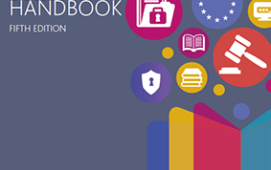
As global fixed Income markets move further towards greater electronification, two recent announcements underscore the market’s growing acceptance of solutions powered by artificial intelligence (AI).
Last week saw the announcement of a strategic partnership between New York-based data and analytics specialist 7 Chord and IHS Markit that will enable customers to consume IHS Markit’s fixed income reference data through BondDroid, 7 Chord’s customisable AI engine. A key outcome of the partnership is that BondDroid will now be able to generate pricing signals for approximately 93% of its coverage of bond issues before those bonds start trading in the secondary market.“AI is a perfect tool to both distill millions of data points into an actionable price and fill in the gaps where little information exists,” says Kristina Fan, 7 Chord’s Founder and CEO. “This allows us to price both liquid and illiquid bonds using BondDroid.”
Fan says 2020 presented the marketplace with “the ultimate test… While many traditional vendors struggled to produce accurate prices in March 2020 in a timely manner, BondDroid had no issues handling elevated transaction volume, wildcard events, and unprecedented volatility.”
Meanwhile, AI-driven data and analytics vendor Overbond and trading workflow management specialists valantic FSA also announced a partnership last week, which will give fixed-income traders the ability to automate up to 50% of their requests for quotes (RFQs).
With the sell-side’s appetite for warehousing risk much reduced in the current regulatory environment, sourcing of liquidity continues to be a key concern for the institutional buy-side. The partnership between Overbond and valantic FSA is designed to make it easier for sell side firms to offer effective RFQ services and improve execution outcomes for their clients.
“The difficulty in automating any part of the workflow on the trading desk is that the securities coming down the pipe are illiquid and don’t trade frequently,” says Vuk Magdelinic, CEO of Overbond. “The data feeds from single electronic venues don’t have enough coverage.”
The integration with valantic enables firms to seamlessly add a layer of data from their own systems, so that the AI can learn their trading styles and counterparty preferences and incorporate those elements into the automated RFQ workflow, says Magdelinic.
“Once the calculation engine does its job, it feeds that back programmatically into the venue to respond to the RFQ. We can currently automate 30% no touch and another 20% one touch with a ‘risk bracket’ for a positive P&L impact. For the buy-side, this can reduce the cost of execution significantly, sometimes up to two to three basis points.”
Subscribe to our newsletter




